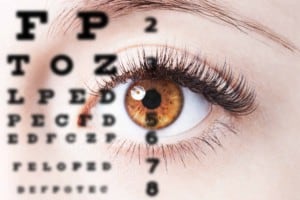 Corneal crosslinking is an innovative, in-office procedure designed to treat keratoconus, an eye disease that weakens the cornea and impairs vision. But how does the procedure work and how effective is it? In this blog post, LASIK provider Austin Eye answers these questions in detail.
Corneal crosslinking is an innovative, in-office procedure designed to treat keratoconus, an eye disease that weakens the cornea and impairs vision. But how does the procedure work and how effective is it? In this blog post, LASIK provider Austin Eye answers these questions in detail.
Corneal Crosslinking Can Stop the Progression of Keratoconus
Corneal crosslinking is FDA approved for treatment of keratoconus. The treatment works by strengthening the cornea, which develops a conical, abnormal shape due to keratoconus.
During corneal crosslinking, riboflavin eye drops (B2) are administered topically and activated using ultraviolet light. This process triggers the growth of collagen fibers, which strengthens the cornea. Clinical studies have found that the treatment prevents the worsening (or progression) of the abnormal shape, therefore preserving vision. It is important to note that while corneal crosslinking is effective in stopping the progression of keratoconus, it is not a cure for the disease.
Effective But with Limitations
While corneal collagen cross-linking is effective in treating keratoconus, it does come with limitations. The procedure usually does not fully correct nearsightedness, farsightedness or astigmatism, which means patients will mostly likely still need to wear glasses or contact lenses after treatment.
Additionally, corneal crosslinking is only able treat mild cases of keratoconus. For severe stages of the condition, corneal transplant surgery may be the only viable option.
The Benefits of Corneal Crosslinking
Although corneal crosslinking does come with a few limitations, eye surgeons and patients alike believe it is a worthwhile investment. Because corneal crosslinking works to lessen the bulging of the cornea, patients can wear contact lenses more comfortably following the procedure, making everyday life easier.
Studies have found that the effects of corneal crosslinking can last for several years. In many cases, the treatment can help patients avoid corneal transplantation, a more invasive treatment option. A corneal transplant also requires a lengthy recovery while corneal crosslinking does not. In fact, most patients are able to resume their normal routine within days after their corneal crosslinking procedure.
To learn more about corneal crosslinking, please schedule an appointment with Austin Eye. Contact our North office at (512) 250-2020 or our Central office at (512) 454-2020.







